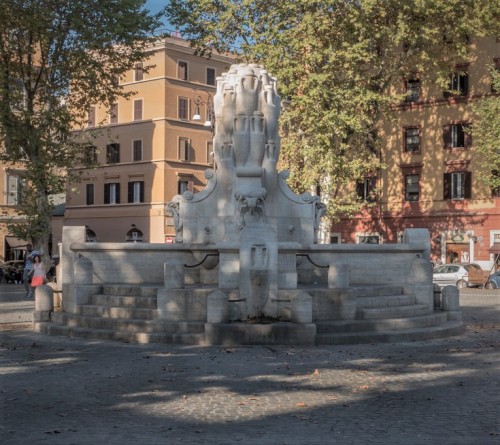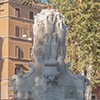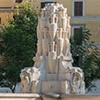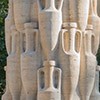
Fontana delle Amfore

Testaccio, Fontana delle Amfore

Fontana delle Amfore

Fontana delle Amfore
Walking in the Testaccio district, sooner or later we will come to a broad square, which is presently known as the Piazza del Testaccio. In the middle, a young architect Pietro Lombardi created one of the most picturesque and modern Roman fountains, at the same time appropriately showing the former character of this place.
Walking in the Testaccio district, sooner or later we will come to a broad square, which is presently known as the Piazza del Testaccio. In the middle, a young architect Pietro Lombardi created one of the most picturesque and modern Roman fountains, at the same time appropriately showing the former character of this place.
Starting in the II century not far from the present-day square there was an enormous landfill for special kind of waste. It was here that amphorae from wine, olive oil and other food products were deposited, which arrived into the city from Ostia (marine port) and were unloaded in the nearby river port on the Tiber. Reusing amphorae which had been previously used was illegal, that is why they were broken up and thrown out here. In time the terrain which had originally been flat turned into a hill which was over thirty meters high, which started being referred to in Latin, Mons Testaceus from the word testa, meaning a shell. The people living in the area were poor and generally condemned to work in the port or in the nearby warehouses. Not much had changed in subsequent centuries besides the fact that, losing its function, Monte Testaccio was gradually overgrown. It was not until the XIX century that a huge slaughterhouse was built in the district (the present-day MARCO Museum of Contemporary Art), in which many of the district’s inhabitants found work.
In 1921 the then district of Ripa was divided into two parts. The southern one became known as the Testaccio, while the amphora became its official coat of arms. In Fascist times, all over the city, but mainly outside the city center, numerous fountains were constructed, with the aim to embellish the worker districts and give them more of a large-city character. One of these was this very fountain, which in 1926, was placed on a square which had served as a marketplace (previously it was known as the Piazza Mastro Giorgio). Lombardi bestowed upon it the shape of a pile of amphorae, in an obvious way referring to the shell disposal found nearby. The water accumulated in it in four rectangular basins set on an elevated pedestal. It spouted out of outlets decorated with the Roman coat of arms (SPQR) supported by the head of a goat.

The fountain not only served as a place to get water and cool off, but also on hot days - thanks to the faucets installed in the lower amphorae – it was possible to drink from it. However, in the following years it deteriorated, lost among stalls, and in time a threat of collapse appeared due to constant landslides. Therefore, less than ten years after it was put up it was taken apart and transported into another, rather unfortunate location on the other side of the Tiber, at the foot of Aventine Hill (Piazza dell’Emporio). There, lonely and without people, situated near a busy intersection, the fountain was forgotten. And thus subsequent decades had passed. The square on the Testaccio was still a neglected bazaar and this did not change until 2012. Then thanks to the initiative of its inhabitants and the city mayor, the marketplace was moved, the square was arranged, and the fountain once again appeared in the middle (2015).
Older inhabitants were moved and grateful for its return. As children they had played on its steps, while today – sitting on the benches surrounding the Piazza del Testaccio – with pleasure look upon children playing around it as they had done in the past.



















